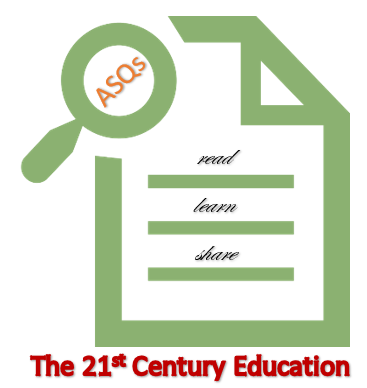
There are 7 instructional design theories:
- situated cognition theory
- sociocultural learning theory
- the ADDIE Theory
- Merrill’s Principles of instruction Theory
- Individualized instruction Theory
- Bloom’s Taxonomy of learning objectives Theory
- The SAM Theory
There are numerous instructional design models. These are commonly accepted design models:
- ADDIE
- Dick and Carey
- Assure
- Backward Design (understanding by design)
- Kemp Design Model
- The Kirkpatrick Model
- Gerlach-Ely Model
- TPACK
Situated cognition theory
Through the studies of Paul Duguid, John Seely Brown, and Allan Collins, situated learning, also known as situated cognition, originally developed as an instructional approach. The divide of knowledge and practice was disputed in their study, “Situated Cognition and the Culture of Learning.” Situated learning is based on concepts from psychology, sociology, cognitive science, and anthropology, among other topics. Public schools, according to Duguid, Brown, and Collins, regard knowledge “as an entire, self-sufficient material, theoretically independent of the settings in which it is learnt and employed.”
Sociocultural learning theory
Learning is a social process, according to Lev Vygotsky’s sociocultural learning theory, and our social environment has a significant impact on our cognitive development. Our contacts with society, as well as their contributions, serve as a temporary scaffold until we are able to assimilate our experiences and acquire higher-order cognitive skills. We are thus able to construct our own distinct consciousness, making us both a byproduct and a designer of society.
Social contact is also an important aspect in learning and growth, according to sociocultural learning theory. This has been a reoccurring theme throughout our lives, as we learn first from our families at home, then from our instructors at school, and finally from our peers both within and outside of our social circles.
The ADDIE Theory
The ADDIE approach is versatile enough to be utilized to build any sort of learning experience for any audience, from K-12 cellular biology classes to corporate training programs for ERP software upgrades.
We primarily create training video packages and eLearning courses at Water Bear Learning. We’ll take the example of a ‘eLearning course’ as the final output of the ADDIE model for the rest of this article. You may customize the final learning output to meet your specific requirements.
Each letter in the acronym ADDIE stands for a particular step in the process of building an effective eLearning course. The acronym ADDIE stands for:
- Analysis
- Design
- Development
- Implementation
- Evaluation
The model is designed to be performed in order, starting with Analysis and ending with Evaluation. ADDIE, on the other hand, is intended to be a flexible, ongoing process of changes and revisions.
Merrill’s Principles of instruction Theory
Many learning design strategies were analyzed by David Merrill, a well-known educator. His studies revealed that instructional design philosophies had certain commonality. Merrill’s first principles of education were built on the foundation of these common ideas.
Learning, according to Merrill, is aided when teachers:
- Is concerned with a certain issue.
- Existing information is activated.
- Demos are included.
- Allows for the application of ideas.
- Allows for real-world integration.
Individualized instruction Theory
Individualized instruction is a type of education in which students are taught one-on-one and can study at their own speed based on a set of progressive goals that lead to the course/curriculum objectives.
Individualized instruction is typically used for courses that need skill development. Courses like keyboarding, drawing, and computer skills are among them. Theory courses may be successfully taught utilizing the customized teaching technique with prior planning and appropriate instructional resources. The quality of the lesson plans is an important factor in the effectiveness of personalised training.
Bloom’s Taxonomy of learning objectives Theory
Bloom’s Taxonomy is a well-known teaching framework that has been used by generations of K-12 teachers and college professors.
Bloom and his associates devised a framework that included six key categories: knowledge, comprehension, application, analysis, synthesis, and evaluation. After Knowledge, the categories were renamed “skills and abilities,” with the assumption that knowledge was required to put these skills and abilities into practice.
Despite the fact that each category includes subcategories ranging from simple to complicated and tangible to abstract, the taxonomy is best recognized by the six primary categories.
The SAM Theory
The Successive Approximation Model (SAM) is a simplified version of the ADDIE Model that was created with the goal of eliciting input and developing workable models early in the process. This paradigm, created by Allen Interactions’ Dr. Michael Allen, employs a recursive rather than a linear process for course creation. Preparation, Iterative Design, and Iterative Development are the three elements of the most basic SAM paradigm. The crucial word here is iterative, which serves as the model’s foundation and indicates that each stage should be repeated and examined.
The collecting of the necessary information and background for the project begins the Preparation phase; the content and breadth of this phase will vary widely depending on the project or course. The “Savvy Start,” which encourages brainstorming, sketching, and prototyping and involves as many interested parties as possible as you develop the material: colleagues, advisors, and, if you’re lucky enough to have them as a resource, students, is the hallmark of the end of the first phase of this model.
The purpose of the second step, Iterative Create, is to design and prototype the material so that interested parties may assess it. The argument here is that it is easier to provide feedback and analyze an existing product than than one that is simply a concept, allowing for more thorough examination and testing.
The finalized prototype is fully developed and implemented in the final Iterative Development phase. It may be assessed and re-run through the development and implementation phases if necessary after it has been utilized.
References
Kurt, S. (2018, May 12). Instructional Design Models and Theories. Retrieved August 25, 2020, from https://educationaltechnology.net/instructional-design-models-and-theories/
Barnicoat, M. A. (2019, May 14). What Instructional Design Theories Work Best With Online Training? Retrieved August 25, 2020, from https://clarityconsultants.com/blog/what-instructional-design-theories-work-best-with-online-training/
Pappas, C. (2020, April 27). Top 7 Instructional Design Theories & Models For Your Next eLearning Course. Retrieved August 25, 2020, from https://elearningindustry.com/top-instructional-design-theories-models-next-elearning-course
Kurt, S. (2021, February 17). Situated learning theory. Educational Technology. Retrieved April 27, 2022, from https://educationaltechnology.net/situated-learning-theory/
Rivera, G. (2022, January 31). Sociocultural learning theory. EdApp Microlearning Blog. Retrieved April 27, 2022, from https://www.edapp.com/blog/sociocultural-learning-theory/
How to apply Merrill’s instructional design principles. Discover Learning Designs. (2021, June 8). Retrieved April 27, 2022, from https://discoverlearning.com.au/2021/06/how-to-apply-merrills-instructional-design-principles/
Individualized instruction. Adult Career and Continuing Education Services | NYS Education Department. (2017, August 21). Retrieved April 30, 2022, from http://www.acces.nysed.gov/bpss/schools/individualized-instruction#:~:text=Definition%3A%20Individualized%20instruction%20is%20a,those%20that%20require%20skill%20building.
Mcdaniel, R. (1970, June 10). Bloom’s taxonomy. Vanderbilt University. Retrieved April 30, 2022, from https://cft.vanderbilt.edu/guides-sub-pages/blooms-taxonomy/#:~:text=Familiarly%20known%20as%20Bloom’s%20Taxonomy,Analysis%2C%20Synthesis%2C%20and%20Evaluation.
Kennesaw State University. (n.d.). Successive approximation model (SAM). Digital Learning Innovations. Retrieved April 30, 2022, from https://dli.kennesaw.edu/resources/idmodels/sam.php#:~:text=The%20Successive%20Approximation%20Model%20(SAM,linear%20process%20for%20course%20development.
